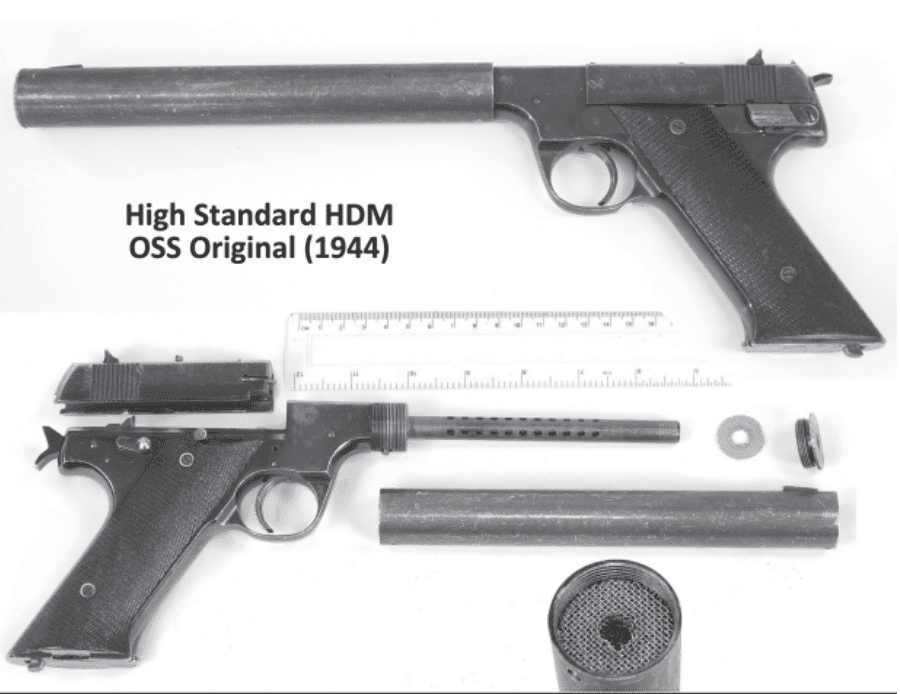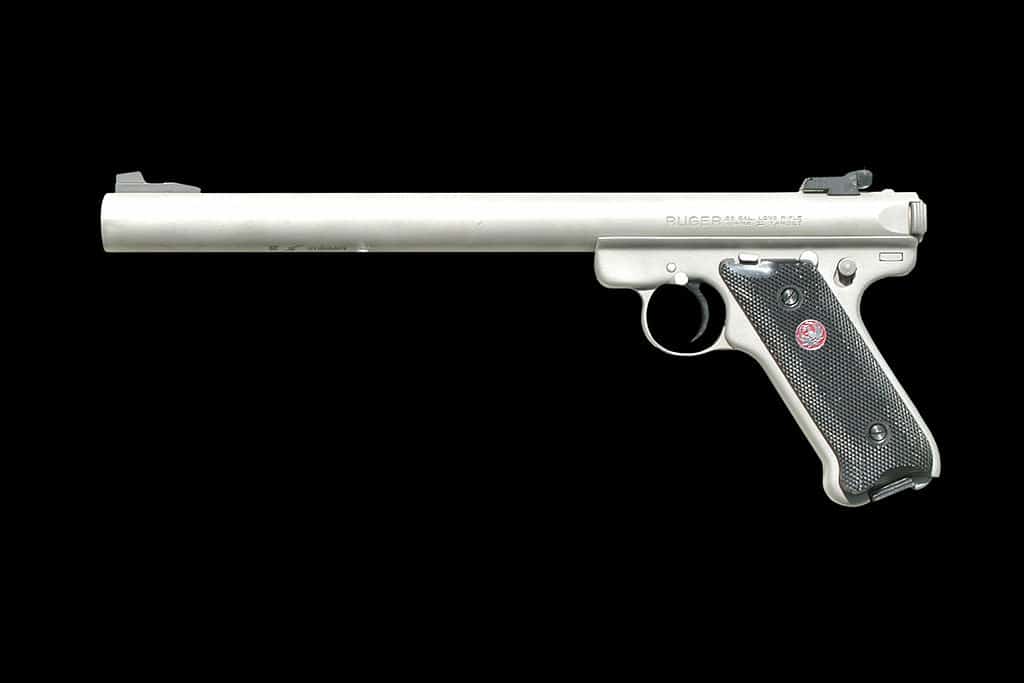Given the modern proliferation of suppressors in both civilian and military hands, it is easy to forget that within recent memory the use of such devices was the exception, not the rule.
Let’s dive down into the pages of history to uncover the US military’s Special Operations use of the suppressed 22LR.

WWII
As we all learned on the History Channel (pre-reality TV), World War Two presented major technological and strategic advancements. Not the least among them was the foundational development of the Special Operations communities in the Allied Nations.
British SAS, the US Navy’s Underwater Demolition Teams (UDT), US Army Rangers, and the Office of Strategic Services all operated in clandestine environments during the war and led directly or indirectly to the more modern Special Operations units we know today.
While there are still a few surviving pieces of hardware, the clandestine nature of these weapons and tactics means historical records are harder to come by than institutional rumors and legends.
High Standard HDM
The High Standard HDM was indirectly demonstrated to President Teddy Roosevelt by OSS director and legendary spymaster Bill Donovan. In 1944 Donovan went to the White House to present the suppressed handgun for the President’s inspection.

Donovan waited as the President’s prior meeting ran late. When Roosevelt finally arrived, he found Donovan presenting him instead with a sandbag, riddled with 10 holes.
Impressed that Donovan had dumped a whole mag undetected in the White House, the President happily approved the acquisition of the quiet little pistol. And he kept Donovan’s demonstration gun.
The OSS (many members of which went on to found the 10th Special Forces Group), often used the High Standard HDM pistol for surreptitious assassination of enemies. Marine Raiders of the era are also said to have used the HDM for sentry removal.
The accurate little .22lr target pistol was fitted with an integral suppressor, which is said to have reduced the report by approximately 22 dB. While the lifespan of the replaceable suppressor was only a couple hundred rounds, it worked well enough that they were built for the government until 1951, and stayed in service long after.
In fact, it was in 1960 that the highest-profile incident involving an HDM happened, though not for the reason one would hope. A U2 spy plane was shot down over Russia, flown by CIA pilot Francis Gary Powers. His High Standard HDM was recovered by the Russkies, and used as evidence against him.
Eventually, Mr. Powers returned home, but his HDM did not. It is displayed in a museum in Moscow, along with the wreckage from the plane.
The High Standard HDM stayed in unofficial service into the Vietnam war. However, by that point the aging guns (and their outdated suppressors) were largely replaced by newer designs, bumping the caliber up to 9mm or .45 ACP.
Ruger MKII
Ruger’s venerable little target .22lr pistol has seen continuous production since the 1950 introduction of the Ruger MK1 as an accurized version of the Ruger Standard.

Jane’s International Defense Review (1996 ed.) mentions that “SEALs may be equipped with a wide variety of small arms, ranging from the 0.22-caliber (LR) Ruger Mk 2…".
Additionally, Navy SEALs and Marine Force Recon units have been noted as using the Ruger MKII with an AWC Amphibian S integral suppressor in more recent years.

Use of the suppressed .22lr by other Special Operations units has been heavily rumored.
A far more technologically advanced suppressor design, the Amphibian represents a multi-generational improvement over the can used in the High Standard HDM.
The MKII suppressed pistol design provides a double-digit decibel reduction over the venerable HDM, providing what might be the closest example of a “Hollywood" quiet suppressed handgun.
Tactics and Use
At its most basic level, the use of an HDM or Ruger MKII is simple, to shoot quietly. How exactly that plays out can be more varied though.
Since their introduction on the battlefield, sentry removal has been a mainstay of small-caliber, suppressed weapons. Whether a guard dog or an inattentive soldier on patrol, the ability to kill without detection (and while not in hand-to-hand range).
Given the CIA’s use of the HDM, it isn’t much of a stretch to imagine that targeted assassinations were a job the suppressed .22lr excelled at. Imagine if you will, a Nazi leader in occupied Paris leaving a War Council meeting. Passing a nondescript person walking the other way, the two collide momentarily. The unknown pedestrian continues on, while the Nazi leader slumps down on a nearby step, bleeding dark arterial blood from multiple small holes in the chest.
In Vietnam, legend tells us that US troops looking to capture Vietcong for interrogation are said to have used a suppressed .22 to kneecap the point man, dropping him to the ground. After he was down, the ambush would be triggered, including claymores set to strike higher than waist level. The injured point man would be the sole survivor and invited back to the US base for a lengthy chat.

While many such stories persist from the various conflicts suppressed .22lr’s have been used in, few are cited in the methods preferred by historians. Most are a word-of-mouth affair.
Modern Day High Standard HDM Build
Given today’s wealth of market options, it wouldn’t be tough to build up your own clone-ish design of a modernized HDM or Ruger MKII.
Or, you can let the experts at Maxim Defense build the best one possible.
The Ruger MKIV-SD combines the quality .22lr handgun with Maxim Defense’s expertise in suppressor manufacturing. For a really deep dive into the MKIV-SD, check this out.









Leave a Reply
Your email address will not be published. Required fields are marked *